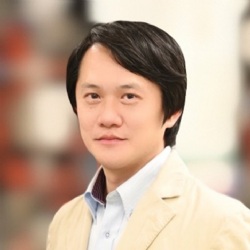-

Hsueh-Shih Chen
Professor
National Tsing Hua University
Topic
Development of Next-Gen Quantum Dots: Low-Cd and Non-Cd Quantum Dots MaterialsSpeaker Profile
Education:
PhD in Materials Chemistry, Department of Materials Science & Metallurgy, University of Cambridge, UK
Current Positions:
Professor, Dept. of Materials Science & Engineering, NTHU (2019–)
Joint-Professor, College of Semiconductor Research, NTHU (2022–)
Distinguished Research Advisor, ITRI (2022–)
Honorary Guest Professor, Yuan-Ze University (2022–)
Director, Society for Information Display (SID), Taipei Chapter (2021–)
Vice Chairman, International Affairs Committee, TDUA (2023–)
Advisor, Electrochemical Society (ECS) NTHU Chapter (2019–)
Vice Chair, Dept. of Materials Science & Engineering, NTHU (2019–21)
Chair, Industrial PhD Program of Advanced Functional Materials, NTHU (2021–22)
Committee Member, International Affairs Committee, TDUA (2020–23)
Review Committee, National Technology Development Program, Taiwan (2023–)
Review Committee, SBIR Program, MOEA, Taiwan (2022–)
Review Committee, CITD Program, MOEA, Taiwan (2021–)
Co-founder, Hsinlight Inc. (2018)
Co-founder, QBright Inc. (2016)
Associate Professor, NTHU (2015–18)
Assistant Professor, NTHU (2013–14)
Honorary Guest Professor, University of Jinan, China (2013–18)
Staff Research Fellow, University of Birmingham, UK (2012–13)Outline
With the continuous advancement of display technology, "Quantum Dots (QDs)" have emerged as a key material for next-generation displays due to their "exceptional color purity, high brightness, and stability". However, traditional cadmium-based quantum dots (such as CdSe) face increasing regulatory restrictions, driving the scientific community to develop "second-generation quantum dots". Among them, "low-cadmium ZnCdSeS quantum dots" and "cadmium-free InP quantum dots" have become the two leading alternatives. This presentation will explore the "optical performance, fabrication technologies, and commercial applications" of these two quantum dot materials, highlighting their respective advantages and challenges. We will examine how ZnCdSeS quantum dots achieve high efficiency while reducing cadmium content, as well as the development progress of InP quantum dots as a cadmium-free alternative. Additionally, we will analyze current market trends and future directions, evaluating the potential of these materials in "Micro-LED, QLED, and bio-imaging" applications, providing a comprehensive perspective on the future of display technology.